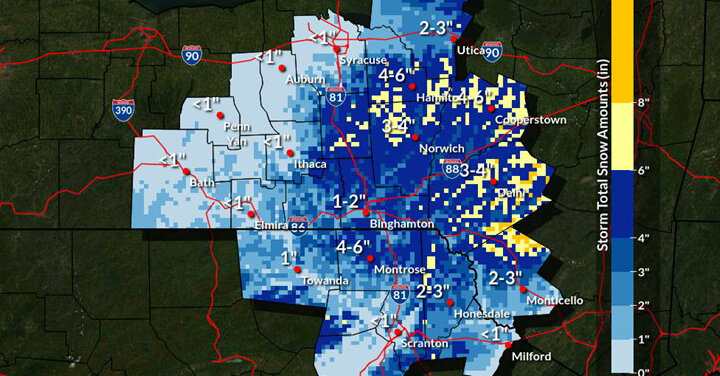Flaco’s Crash Might Have Been More Than Bad Luck. Here’s What We Know.
Flaco spent a year defying expectations, an owl born into captivity who quickly learned to hunt and fend for himself in the wilds of New York City. That ended on Friday when he flew into a building near Central Park. What went wrong?
Did he hit a window that he failed to perceive as glass, like hundreds of millions of birds across the United States each year? Or was he compromised in some way that impeded his ability to navigate New York’s concrete canyons?
A full necropsy, to be performed by the Wildlife Conservation Society, will take weeks. Initial findings were “consistent with death due to acute traumatic injury,” the group said on Saturday evening.
The main impact appears to have been to the body, with substantial hemorrhage. There was also a small amount of bleeding behind the left eye. Flaco’s body condition seemed good. He weighed 4.1 pounds, only slightly less than his last recorded weight of 4.2 pounds at the Central Park Zoo, his longtime home.
“Flaco’s tragic and untimely death highlights the issue of bird strikes and their devastating effects on wild bird populations,” the zoo said in a statement. “It is estimated that nearly one quarter of a million birds die annually in New York City as a result of colliding with buildings.”
The next step will be to identify any underlying factors that may have contributed to his death. The results of testing on tissue samples — including toxicology tests to evaluate potential exposures to rodenticides or other toxic substances, and testing for avian flu and other diseases — are expected in coming weeks.
Poisoning by rodenticide, lead or even an illness could have all contributed to his death, said Rita McMahon, director of the Wild Bird Fund, the rescue group that first responded on Friday. Sluggish, poisoned rats make easy targets for birds of prey, which in turn ingest the poison.
Barry, the celebrity barred owl in Central Park who died after colliding with a car in 2021, was found to have high levels of rat poison in her system.
Pigeons, which Flaco had been seen hunting recently, can ingest high levels of lead while pecking around the city. Lead can accumulate in birds of prey, causing lack of coordination, weakness and other symptoms. Poisoned birds become more vulnerable to predation, trauma and other diseases, according to the Cornell Wildlife Health Lab.
Moreover, Flaco could have been infected with a highly pathogenic form of avian flu that has been wreaking havoc on birds and even some mammals around the world.
While Flaco was unique, having escaped from a zoo, birds of prey have been increasingly adapting to life in cities over the last few decades. New York is home to substantial breeding populations of red-tailed hawks, peregrine falcons, American kestrels and osprey, according to NYC Audubon.
Three species of owl live in the city’s parks. For a year, with Flaco, a Eurasian eagle-owl, it had been four.
As Flaco’s legions of fans grieve his death, bird advocates hope the loss will jolt the public into making cities safer for birds.
“We celebrate these creatures,” Ms. McMahon said, pointing not only to Flaco, but also to Barry the barred owl and a bald eagle named Rover that reportedly died a few days ago. “In essence, they probably will all die from human interference, from things we’ve done.”
Bird-friendly glass, turning off lights at night and avoiding the use of anticoagulant rodenticide can all help, experts emphasize. To protect smaller birds, keep cats inside.
“That’s the one good thing that can happen,” Ms. McMahon said. “Often you have to lose something to care about it.”
Check out our Latest News and Follow us at Facebook
Original Source







